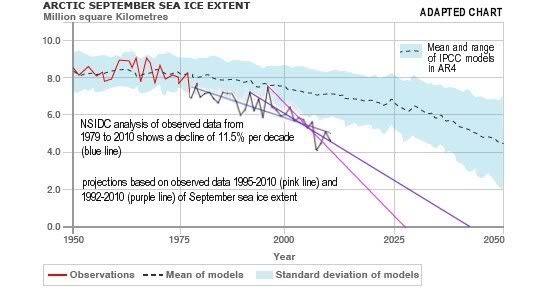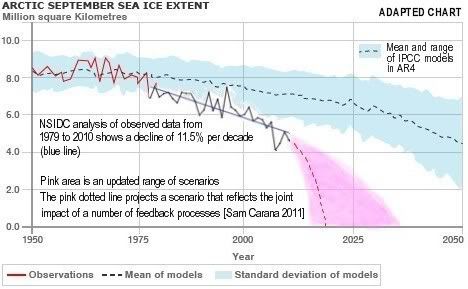Climate Congress, Copenhagen, 10-12 March, 2009
Open letter to Dr Rajendra K. Pachauri, IPCC chair
Dear Dr Pachauri,
The Climate Congress presents an important opportunity to present all facets of the current situation, explore the ramifications, and suggest appropriate actions. The aim must be, as far as possible, to address the threat of a disastrous multi-metre rise in sea level and catastrophic multi-degree rise in temperature – whenever they might occur.
We would like to suggest a rather simple division of the problem/solution domain:
Part A: Emissions reduction
About: Reducing emissions of greenhouse gases into the atmosphere.
Target: Achieve near-zero carbon economies throughout the world by end century.
Difficulties: International agreement, life-style changes, high cost.
Rationale: Long-term sustainability.
Part B : Carbon stock management
About: Removing CO2 from the atmosphere by various means.
Target: Reduce levels below 350 ppm over next three decades.
Difficulties: May involve change in agricultural practice, worldwide. Side-effects may be difficult to anticipate.
Rationale: Reduce CO2 climate forcing below its current level, halt ocean acidification and protect carbon sinks.
Part C : Heat transfer and radiation management
About: Mainly about albedo engineering and solar radiation management.
Priority target: Cool the Arctic sufficient to halt retreat of Arctic sea ice within three years.
Difficulties: Seen as tampering with the environment, and therefore intrinsically dangerous; but cost is low and side-effects should be manageable.
Rationale: Reduce risk of massive methane discharge and stabilise the Greenland ice sheet.
International focus has been almost entirely on Part A until recently, when it has been realised that:
(1) it is proving extremely difficult to achieve reductions;
(2) the current trend is towards IPCC’s worst case scenario;
(3) lifetime of CO2 had been under-estimated – even if anthropogenic greenhouse gases could be stopped overnight, the existing gas levels will live on in the atmosphere for centuries, causing the global temperature to continue to rise many degrees;
(4) global warming of more than 2 degrees could be disastrous;
(5) tipping points could be reached much sooner than expected.
It is generally recognised that the underlying primary cause of global warming is the excess of CO2 in the atmosphere. If emissions reduction can’t reduce it quickly enough, then we have to resort to some form of geoengineering – or more specifically carbon stock management – see Part B.
Furthermore, ocean acidification is becoming dangerous, and this can only be tackled by removing CO2 from the atmosphere. So, within a decade or two, carbon stock management could become essential, and we should be doing large-scale experimentation now.
But the actions of Part A and Part B cannot prevent tipping points driven by positive feedback on temperature. Emissions reduction and carbon stock management cannot produce a cooling effect – certainly not on the time-scales we are talking about. We have to resort to other kinds of geoengineering, hence Part C.
As regards tipping points, our perception of the situation has changed fundamentally since the dramatic retreat of Arctic sea ice in September 2007. The IPCC had chosen to ignore potential tipping points, as being too difficult to model or lacking reliable data.
But now some experts are talking about possible summer disappearance of sea ice within a decade [1], and this possibility is even mentioned in the introduction to Session 1 of the Congress [2]:
“Sea ice is changing and the sea ice in the northern polar ocean has retreated in the last few years and might totally disintegrate during the next decade.”
Sea ice disappearance will accelerate Arctic warming which could trigger the release of vast amounts of methane from permafrost (leading to many degrees of global warming) and/or destabilise the Greenland ice sheet (leading to many metres of sea level rise).
There now appears no other possibility to save the Arctic sea ice than to cool the Arctic region, by reflecting more sunlight back into space. There are two prime candidates for this: stratospheric sulphate aerosols and marine cloud brightening [3]. The former involves the injection of a H2S or SO2 high in the stratosphere, where it reacts to form microscopic droplets of sulphuric acid which scatter sunlight efficiently. This mimics the effect of a volcano like Pinatubo, which cooled the planet for two years from its sulphur emissions into the stratosphere. The latter – the brightening of marine clouds – involves producing a very fine spray of sea water from ships which sail underneath low-lying cumulus clouds, such that some of the spray wafts upwards, brightening the clouds and reflecting light back into space.
Modeling suggests that each of these cooling technologies should be effective, affordable, fast acting, easily reversible and reasonably safe.
If we can save the Arctic sea ice, then we may be able to avoid other tipping points such as the methane release from permafrost. Such action buys time while we reduce CO2 levels and avoid other catastrophes such as from ocean acidification. On the other hand, if we do not act with the necessary urgency, we may soon find ourselves beyond the point of no return: doomed both to many metres of sea level rise and to spiraling temperatures, way above 6 degrees this century – temperatures for which the very survival of our civilization would be in question.
- Stephen Salter
Professor of Engineering, University of Edinburgh
John Latham
http://www.mmm.ucar.edu/people/latham/
- Oliver Wingenter
Professor of Atmospheric Chemistry and Climate Change,
New Mexico Institute of Mining and Technology
- Peter Read
Hon. Research Fellow, Massey University Centre for Energy Research
- Andrew Lockley, London UK
Former director of Friends of the Earth ENWI
- John Gorman MA (Cantab), London, UK
- Sam Carana, contributor to feebate.net
sam.carana@gmail.com
References:
[1] Climate Safety report, which can be downloaded from:

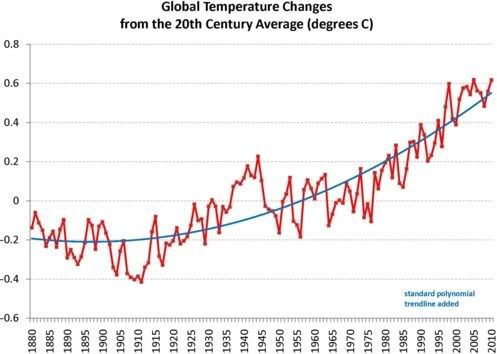
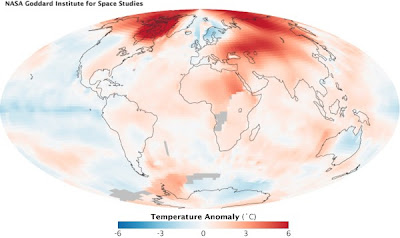 Arctic sea ice cover in December 2010 was the lowest on record for the month, said the WMO, adding that sea ice around the northern polar region shrank to an average monthly extent of 12 million square kilometres, 1.35 million square kilometres below the 1979 to 2000 December average. Furthermore, 2011 has started with the lowest Arctic sea ice extent on record for this time of the year, as shown on the International Arctic Research Center graph below.
Arctic sea ice cover in December 2010 was the lowest on record for the month, said the WMO, adding that sea ice around the northern polar region shrank to an average monthly extent of 12 million square kilometres, 1.35 million square kilometres below the 1979 to 2000 December average. Furthermore, 2011 has started with the lowest Arctic sea ice extent on record for this time of the year, as shown on the International Arctic Research Center graph below.




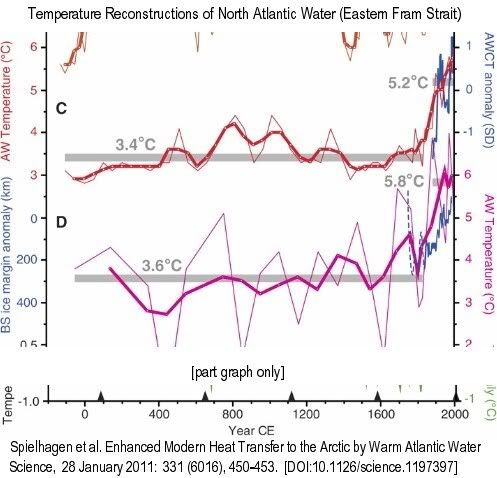 Thin lines are raw data, bold lines are three-point running means…. (C) Summer temperatures at 50-m water depth (red)…. Gray bars mark averages until 1835 CE and 1890 to 2007 CE. Blue line is the normalized Atlantic Water core temperature (AWCT) record … from the Arctic Ocean (1895 to 2002; 6-year averages)…. (D) Summer temperatures (purple) [calculated with a different method]
Thin lines are raw data, bold lines are three-point running means…. (C) Summer temperatures at 50-m water depth (red)…. Gray bars mark averages until 1835 CE and 1890 to 2007 CE. Blue line is the normalized Atlantic Water core temperature (AWCT) record … from the Arctic Ocean (1895 to 2002; 6-year averages)…. (D) Summer temperatures (purple) [calculated with a different method]